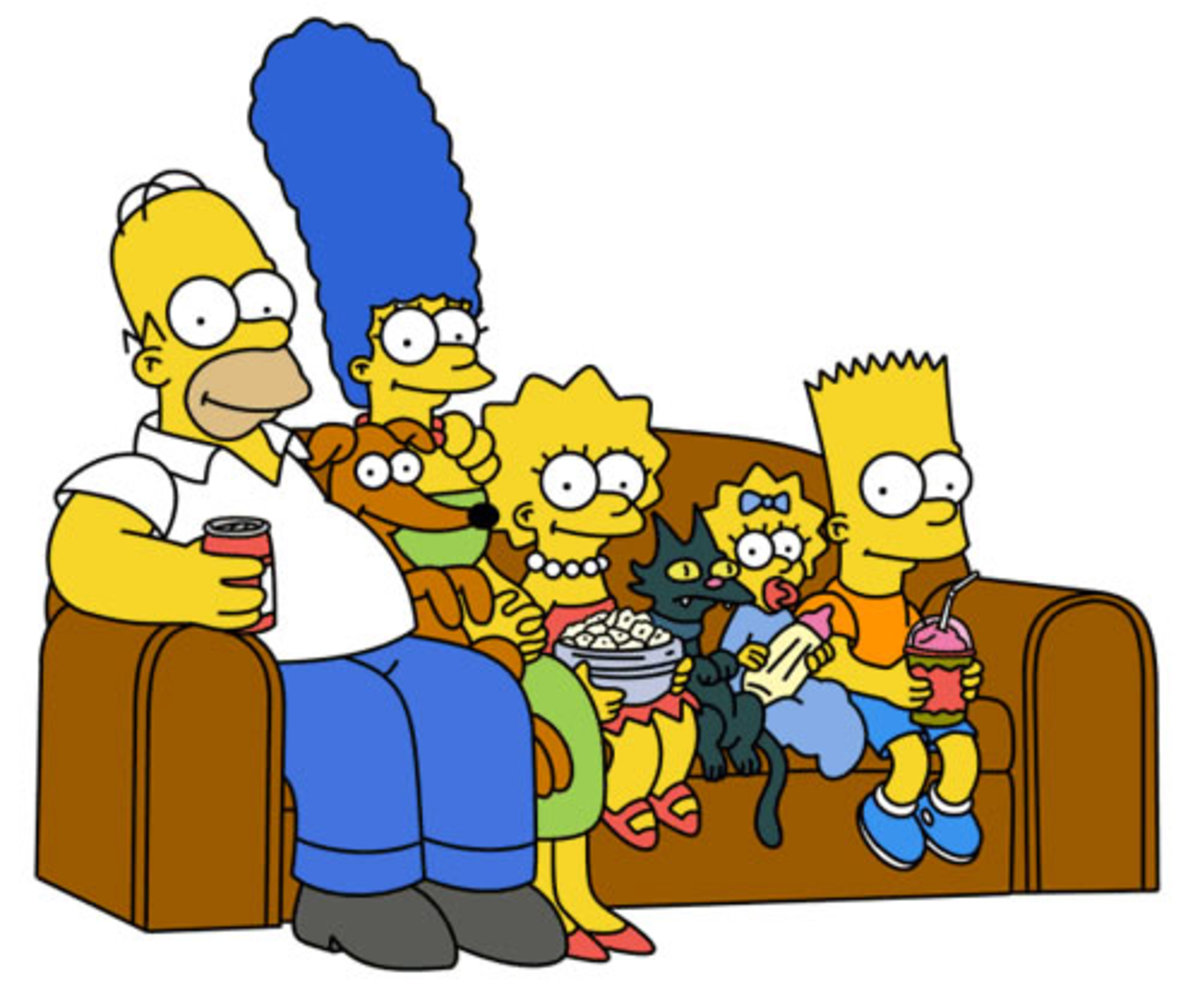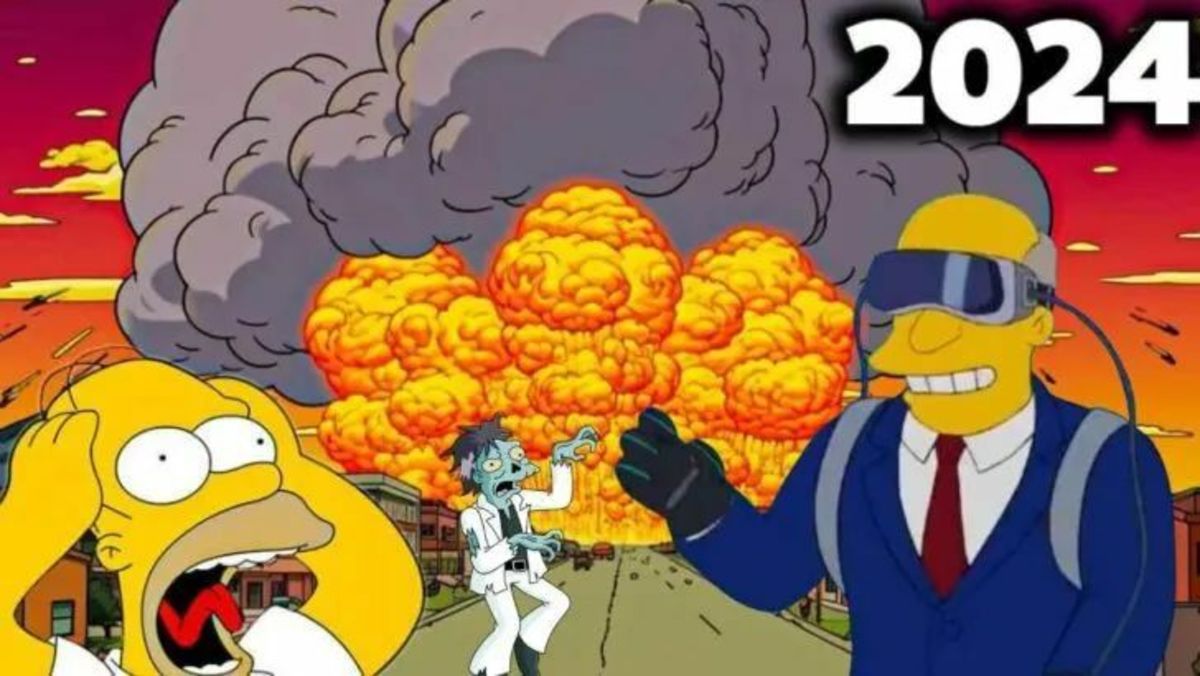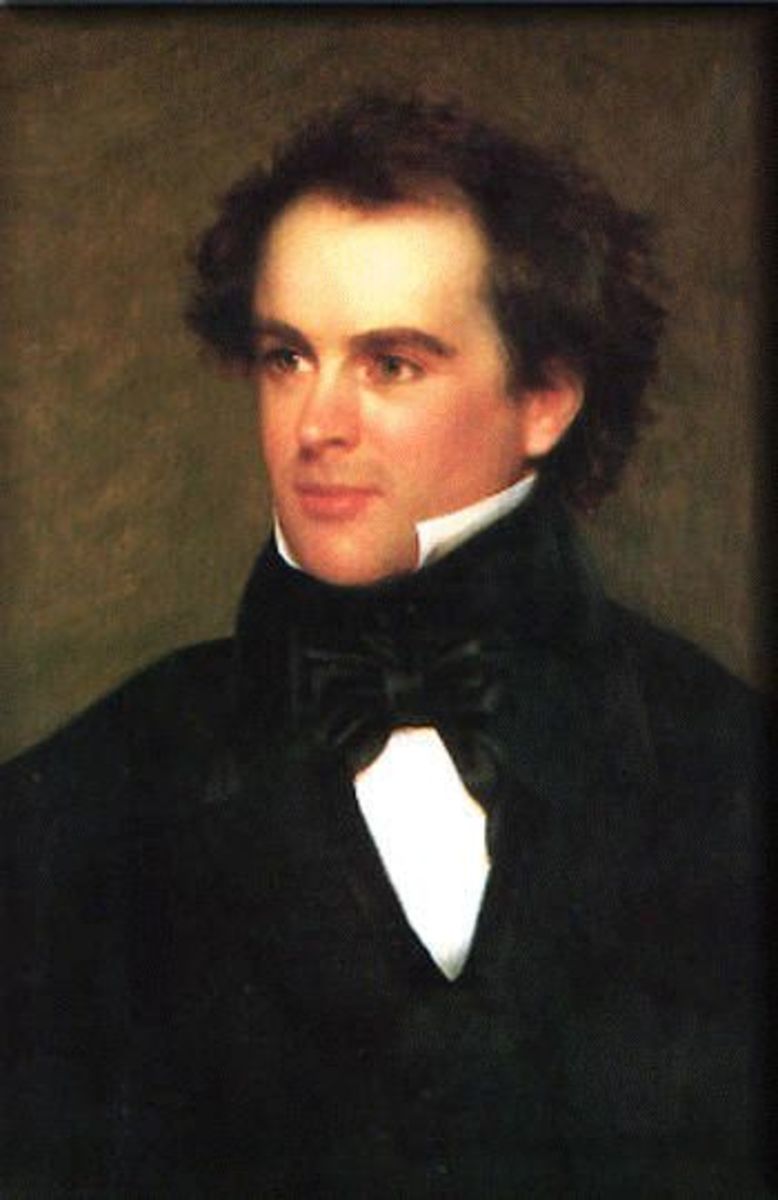A * GCSE English Literature Media Essay - The Simpsons
The Simpsons
How do the makers of The Simpsons use a simple cartoon format to combine very realistic situations and farcical comedy to produce a widely popular television series?
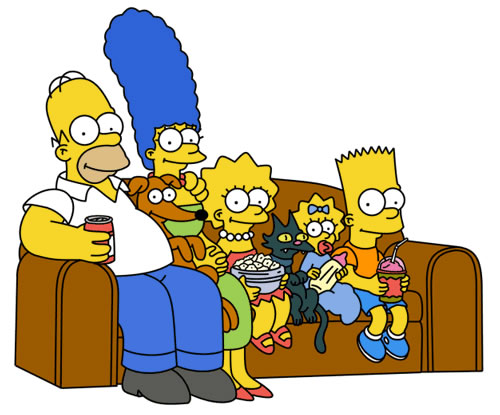
The Simpsons is a very successful animated sitcom. A sitcom is an abbreviation of situation comedy in which you have different storylines for every episode. Other famous animated sitcoms include Family Guy, Futurama and South Park.
The Simpsons, created by cartoonist Matt Groening (and named after the members of his immediate family except for Bart, which is an anagram of brat) first appeared on American television on April 19, 1987. The family live in the city of Springfield, named because of a long running joke based on the fact that 34 states in the USA have at least one community with that name. Springfield is meant to be a stereotypical American city with all the general amenities such as an elementary school, a baseball stadium, an airport, a shopping district and a church etc.
Most people can relate the characters in The Simpsons to someone they know, and although they are not a perfect family, most if not all of the characters are exaggerated stereotypical American citizens (i.e. Homer loves food and eats plenty of it as do many American citizens).
The main characters include Homer, a father who gives bad advice and works as the safety inspector at the Springfield Nuclear Power Plant; Marge, a caring mother and wife who tries to keep peace in the family; Bart, a hell-raising 10-year-old who causes plenty of trouble; Lisa, a smart, philosophical 8-year-old, who loves to play the saxophone; and Maggie, the baby of the family, who communicates by sucking her dummy. Although The Simpsons is humorous and enjoyable to watch, it still manages to portray social and moral issues (such as love, drugs and money) through the unusual medium of a cartoon format.
It is very successful in capturing a wide audience, with adults and children alike who thoroughly enjoy it for many different reasons. The Simpsons also appeals to many nationalities because of the fact that it is broadcasted in English and no less than six other different languages: French, Italian, Finnish, Danish, Spanish and Portuguese. Many famous people such as Tom Jones, Buzz Aldrin and even the priminister, Tony Blair, have made an appearance in The Simpsons as well as many well-known bands such as Aerosmith, Red Hot Chilli Peppers and U2.
As the series have progressed such has the popularity of the sitcom. Homer Simpson has since become the most popular member of the Simpson family with plenty of merchandise being produced to keep up with the high demand.

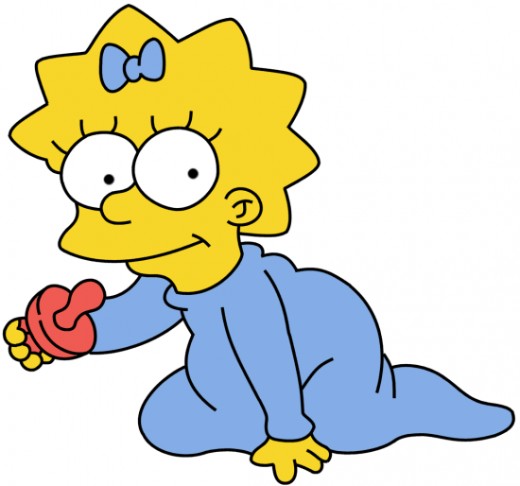
The opening credits of "The Simpsons" give us clues about the major characters in the program (Marge, Homer, Bart, Lisa and Maggie). We hear the theme tune then the clouds part and THE SIMPSONS appears. The camera zooms in through the letter P to reveal the town of Springfield and the first image is of two greyish towers engraved with the symbol of the atom: “Welcome to Springfield Nuclear Power Plant” a sign says. After two seconds of the show, we therefore find something very different from the normal animated sitcom. Most kids have never seen a nuclear power plant. However in America there are many of them, and in Springfield it is a key industry-Homer’s place of employment.
The camera then sweeps further down the hill into a window of an orange coloured elementary school where a boy is doing detention, writing the same line over and over again on the blackboard, which initially establishes him as a troublemaker. The boy is ten-year old Bart Simpson and it is not a wild guess to say he has been given his assignment for misbehaving. This immediately gives us (the audience) the impression that Bart is a little rebellious. If the viewer is quick enough to read what the boy has been ordered to write, which is different every episode, than they will almost certainly form the opinion that Bart is wayward sort of character. He hears the bell, and leaves the class-bursting out the front doors of the school, and flying gleefully past the flagpole which demonstrates his reluctance to stay in school a minute longer than he has to.

Next we see Homer Simpson who on hearing the quitting whistle, hastily removes his mask and the radioactive glowing rod he was holding pops down his shirt, signifying that he is possibly quite clumsy and has a low level of intelligence – after all, who would be so careless with a radioactive rod?! This gives us a clear perspective of the character of Homer Simpson. He is a typical labourer and it is obvious he loathes work and can’t wait to leave, however he is obviously in a hurry to get home which leads us to believe he loves his family very much.
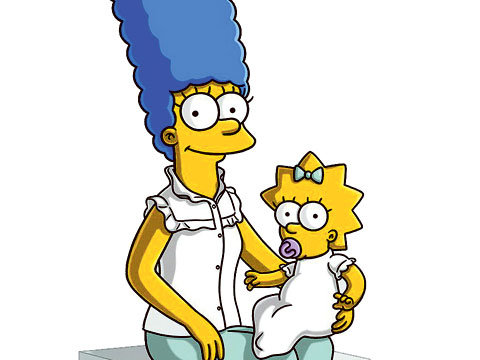
We then see Marge Simpson who is at the grocery store, Marge is reading "Mom Monthly" in the check out line; Maggie is scanned. Marge is relieved to see Maggie in the cart and breathes a sigh of relief. This shows us that Marge is a caring mother and a typical housewife: taking care of the family’s domestic needs.
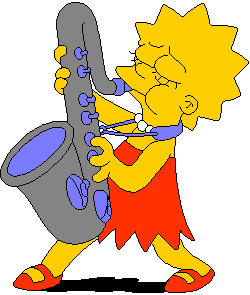
We pan across to a school orchestra room. Lisa's sax solo is high-pitched. Largo dismisses Lisa, who walks out the door playing her sax. Homer drives down the street, uncomfortably discovering the rod in his back. He pulls it out, and throws it from the window. It lands in front of Moe's Tavern. The rod bounces away and the dust clears. Bart comes by on his skateboard, grinning. His right foot sticks off the board, as he grabs the lamppost to help him make the corner. He skates past a pet store, and a TV store, in passing, he grabs the bus stop and takes it with him. Again we are given the impression that Bart is mischievous.
A smiling Marge and Maggie round the corner in a red sedan. We see a close up of Maggie steering. Maggie looks at Marge, then looks back at the road. They look at each other, then honk the horn.
When see Lisa wobbling back and forth on her bike, with a large stack of books in the bike basket and a guitar case behind her. She hits a bump, and the books fly into the air... restrained by bungees. She makes a right turn down the street. She jumps off her bike in the driveway, grabbing her books and instrument case. The bike moves into the garage, the door already opening for Homer's car, as Lisa runs to the door.
Already, Lisa Simpson is portrayed as a well behaved, intelligent child who has a gift for playing the saxophone. We are given the impression that she is talented, has a hard work ethic, reads and also does homework. She seems to be the complete opposite of Bart and an almost perfect child.

Homer's car comes from left to right, turns into the driveway and stops. Bart hops his skateboard across Homer's car. Homer gets out just in time to see Marge's car. He screams a short scream, and runs into the garage as her car pulls in behind. Looking over his shoulder frightened, he opens the door. The family runs in and sits on the couch in front of the television.
From the first half a minute of the sitcom we are given enough clues about each of the major characters to form our own opinion of what they are like. The introduction to The Simpsons is unique from other animated sitcoms in that it gives us these “clues.” It is also very clever in the way it was made because it is very entertaining and would, in my opinion, deter the viewer from switching channels because they want to find out more.
One of the episodes in The Simpsons is ‘Marge Be Not Proud’ in which Bart sees a commercial for a new video game, Bonestorm. Deciding he must have it, he asks Marge and Homer buy it. When they refuse to buy the game for him he tries to steal it from the local Try 'N' Save. However, he is caught by store security man, Detective Brodka who forbids Bart to return to the store. Bart is caught in the middle when Marge decides to take the family to the Try ‘N’ Save to get the family portrait done. The truth comes out with videotape as proof. Marge is heartbroken and begins acting differently towards Bart. Feeling the loss of her affection, Bart goes back to the discount store and returns with a framed picture of himself: a Christmas present for Marge. Touched, Marge tells Bart he can open one of his presents early - a video game that ‘all the kids want’. Bart opens his gift to find Lee Carvello's Putting Challenge. This episode is a Christmas special and a touching look at the relationship between Marge and her growing Bart.
The episode opens with Bart and Lisa watching a Christmas special hosted by Krusty the Clown. A commercial then appears advertising the fighting game Bonestorm. It is a very violent advertisement which illustrates the fact that most Americans are overly obsessed with material possessions - more than most cultures: and indeed their entire culture is materialistic.
Bart then enters the kitchen, where Homer and Marge are, and says to his mother, “Buy me Bonestorm or go to Hell”. This is evidence of how family values have slipped in the modern age, possibly a view intended to be expressed in this episode of The Simpsons by creator Matt Groening. As well as relating to real life, this comment emphasises Bart’s personality in the cartoon which is a common theme. The comment illustrates Bart’s apathy and his interest only in gratuitous violence, as well as other frowned-upon traits, because the scene containing the comment, where Bart is animated and full of vigour is juxtaposed next to the scene in which he is being apathetic and is bored, only taking an interest when an advert for a videogame comes on.
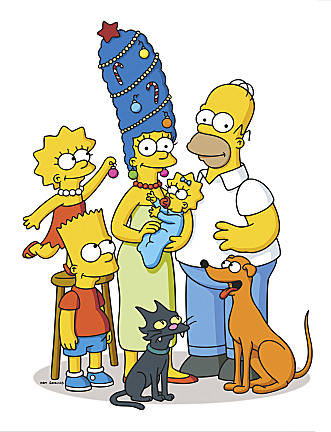
Homer’s and Marge’s common themes and personalities are also shown in scene after Bart and Lisa are sitting and watching TV. In this scene, Marge states, “I’m sorry but those games cost up to and including seventy dollars and they’re violent and they distract you from your schoolwork!” Marge raises concerns over the apparently extortionate cost of the video game, the controversial content and how schoolwork should always come first. It is also curious to note how Marge makes the assumption that this game would distract Bart from school, i.e. she cannot truly know, yet she does because she knows her son and what it is like. This is typical of Marge, and is also the common stereotype of the stern but fair mother figure.
Homer’s frequent obliviousness to other’s feelings is also shown when, while trying to comfort Bart, he says, “I know how you’re feeling, Bart, when I was a boy I wanted and electric football game more than anything else in the world…And my parents bought it for me and it was the happiest day of my life.” This comment, obviously, does not in fact serve to comfort Bart. This comment illustrates Homer’s common ignorance and obliviousness to many things, including other’s feelings. The scene also shows the common father stereotype in that father’s allegedly are less in tune with their children’s feeling than mothers.
In the next scene, Bart is lamenting the distinct improbability that he will ever receive the videogame Bonestorm when Marge comes in and does her lullaby to get Bart to sleep. This displays another maternal stereotype in the deep affection that all mothers have for their sons that they mother them too much, and Bart responds with another teenage stereotype by stating that he is ‘too old’ for ‘the sleepy train’ now. It is clear that Bart thinks he is too ‘cool’ for such rituals, which is both a common theme with the character of Bart and a stereotype for most Western teenagers. It is certainly possible that this stereotype is confined to only Western teenagers. For example, a Nigerian teenager may well be vastly more grateful for a mother’s love. This episode may well be attempting to express that Western, particularly U.S. American, teenagers take their mothers for granted, an idea that is in fact explored more thoroughly throughout the episode.
The next few scenes see Bart trying everything within his power to acquire Bonestorm. This shows the ‘fad’ culture of most rich Western nations, in that the most important thing in Bart’s mind at this point is the acquiring of a simple videogame. The situation may be quite different in a third world country, where priorities are entirely different. These few scenes also show Bart’s common stubbornness, again a theme, in that he refuses to accept the possibility that he will not get the game.
Bart then goes to the Try ‘N’ Save and stands outside the store. As he enters he is so desperate to get the videogame that he even entertains the idea that if he stands next to the videogames looking sad, a fellow American citizen would feel sorry for him and buy him the game. This is in fact a very farfetched idea which is stereotypical of most kids. There is no way, that in a rich Western nation like America anyone would buy him the game because most people are too selfish with their money. This also shows that Bart isn’t even thinking about stealing the videogame at this point.
The next scene shows the audience, even if Bart does not seem to realise, how lucky Bart is to have Marge as a mother, by showing a very rude and spoilt brat force his apathetic and ignorant mother to buy two copies of Bonestorm because he is “Not sharing with Katelin [presumably the boy’s sister]”.

The cartoon then shows how impressionable Bart is while also drawing a comparison to a teenager in real life because Bart realises that he can steal the game after two of his fellow students do. He is persuaded by them that shoplifting is a ‘victimless’ crime.
The cartoon then shows how jaded Bart is by all the videogames he has played when it shows apparitions of famous video game characters like the Mario Bros and Donkey Kong appear around his head and try to persuade him to steal the game, by telling him that “the store is so rich” and “it’s the company’s fault for making you want is so much.” Bart is lead to believe that stealing the game is justified, even though deep down he knows it is wrong. This is stereotypical of most teenagers who at one point in their life steal something, even if their upbringing has been very good – like Bart’s.
Bart makes it out of the store thinking he has not been seen and is shocked when the security detective grabs his shoulder and takes him back in the shop. On the way in they pass the mother who brought her spoiled brat of a son two copies of bonestorm earlier. She states, “That mother must have made some terrible mistakes” which is extremely hypocritical of her since she is obviously making worse mistakes. This is common of a lot of mothers who fail to realise that they are not bringing up their children with any morals or standards. It is also very humorous for adults watching as they can clearly see what a bad job she is making of parenthood and in fact, Bart is better behaved than her own child.
When the security guard takes Bart into his office he shows him an information video presented by Troy McClure, who is used frequently to put across morals and illustrate points. This is also a regular gag or comical sequence in the show because Troy himself is a raging alcoholic and a hypocrite. In this case, during his introduction, he says, “Thereby completing my plea bargain with Footlocker, Beverly Hills...” He is in fact insinuating that he himself has shoplifted, yet he is presenting an educational video entitled “Shoplifters Beware”. This is a common theme in many episodes of The Simpsons.
The video that the guard shows Bart has no real point, it does not illustrate the consequences of shoplifting nor does it give any reason why one should not shoplift. In this episode, Bart has been surrounded by hypocrites and bad influences: Homer when he was trying to comfort Bart, Troy in the video and Jimbo and Nelson shoplifting. As such Bart is confused because of these bad influences and hypocrites and lack of morals being taught to him, hence his expressed confusion after the tape was played. But he knows he has done wrong and intends to race home and change the tape in the answering machine. As he is racing home there is an amusing scene where Bart is riding frantically muttering “ I gotta change that answering machine tape, oh god I gotta change that tape,” while Homer, Marge and Maggie are driving home in the car as fast as they can to change Maggie, “gotta change Maggie, dear god I gotta change Maggie ,” (Homer says). This is particularly humorous for both adults and kids watching as it illustrates how alike Bart and Homer are. When Homer turns on the answering machine, Bart has replaced the tape with another tape – Camp Grenada. Homer listens then asks Marge if Lisa is at Camp Grenada. This is also very comical but also illustrates Homers lack of knowledge when it comes to his kids. This is a common theme in many Simpsons episodes.
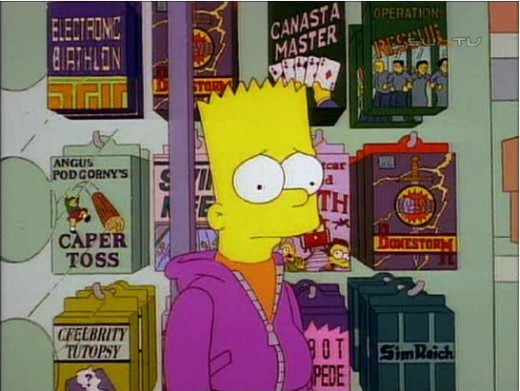
The next scene is in the morning and as Bart walks in the kitchen he is whistling happily, disregarding the fact that he was just caught shoplifting the day before, counting himself lucky that his parents didn’t find out. Marge tells him that they are going to the Try ‘N’ Save because to get the family photo done. As Bart is putting his suit on he has a vision of himself in juvenile hall for Christmas. The inmates are queuing up to receive a Christmas present donated, humorously, from the Port Authority Lost and Found Office and are receiving things such as old newspapers, books of carpet samples and Bart himself receives a soiled wig. The whole situation is quite American i.e. the loud prison guard, the orange prison uniforms and even the depressed looking man in a Santa Suit. The Simpsons contains many of these American stereotypes, another example is the name of the shop Bart was caught shoplifting in: The Try ‘N’ Save. Such names or similar ones are common in America, such as the Walmart, K Mart etc. The Try ‘N’ Save is an extreme of the American supermarket and corporate culture. Bart’s vision of juvenile hall is a common case of a child escalating a situation in his mind and going to extremes. It is more probable that the security guard said he will be “spending Christmas in juvenile hall” to scare him away from further shoplifting. Such fantastical situations, imagined and real, are common in The Simpsons, yet seems real to Bart because he knows stealing is wrong and, like many young children, think stealing of any kind is an imprisonable offence.
Bart even tried to disguise himself in a humorous sequence involving a fake nose, sunglasses and chin putty, again an extreme only to which a paranoid child would go.
Marge locking the car doors reminds Bart of prison bars slamming and locking him in, a siren in the Try ‘N’ Save store advertising a product there scares him and probably reminds him of police sirens. These are the symptoms of common guilt and fear felt by most young people when they do something wrong. The rest of the family’s intention to prolong the visit to Try ‘N’ Save serves to exacerbate Bart’s paranoia.
When the picture is being taken Bart is grabbed by the store detective and thus, ruins yet another family Christmas portrait. Homer, shocked shouts at the detective, “what are you doing to my son?!” Surprisingly Homer acts at the protective father figure here which is a rarity for him. The store detective then tells Marge, Homer and everyone who has crowded around that Bart has broken the 11th commandment, “thalt shall not steal.” Marge is taken aback as any mother would be and protests that Bart is not a shop lifter, in fact she is convinced that he is not which illustrates Marge’s over confidence in her son. This is common amongst many mothers who feel that their son can do no wrong. The detective shows them the tape just has Bart admits to stealing the game- which shows Bart has at least some integrity. Marge is heartbroken and later that evening Bart tries is utmost to be as well behaved as possible but Marge speaks to him without any feeling or eye contact. This illustrates the fact that Marge and Bart have lost touch with each other. This also shows the audience, namely children, that actions do have consequences, no matter how big or small.
That night Marge does not do her usual evening ritual “the tuck in express” to Bart to his dismay, she only mutters a short goodnight to him. There is a short scene in which Homer has a notepad and has come up with Bart’s punishments. Firstly “Bart is not allowed to leave the house, not even for school, secondly, no eggnog, in fact no nog period, and third, absolutely no stealing for three months.” These rules are hardly very punishing which shows that Homer never really succeeds in disciplining Bart which is a common theme in The Simpsons. It also does not present any morals or standards from Homers part about the consequences of Bart’s behaviour, they come from Marge. The next morning Bart is heartbroken when Marge does not wake him up and does not put a marshmallow in his hot chocolate, claming he is “too old.” Marge is teaching Bart a lesson and at the same time trying not to mother him too much. Bart goes to Milhouses and feeling the loss of affection from his own mother, he asks milhouses mum if he can hang out with her. When he returns home he finds that Homer, Marge, Lisa and Maggie have all made themselves out of snow. When he asks Marge why they did it without him, Marge says she figured he was too old for “this sort of thing.” This is educational and presents morals and values that show young children just what can happen from their actions, they feel sorry for Bart and wish that this sort of thing will never happen to themselves. Bart goes out and meets Nelson who shows him yet another item he has swiped from Try ‘N’ Save – a replacement tire. Bart is extremely angry and visits the store. He gets a self portrait of himself and when he gets home he hides it under his jacket. Marge is suspicious and starts shouting at Bart accusing him of strealing again. When Bart shows her the picture with the receipt attached, Marge is overcome with love and affection for Bart. She is finally convinced that Bart is truly sorry for what he has done and lets Bart open a Christmas present early – Lee Carvello’s Putting Challenge. Although this is not what Bart was expecting or wanted, he is just grateful to have his mothers love again.
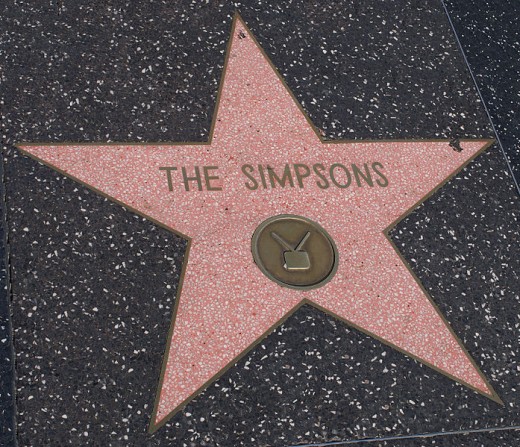
In this episode there was a lot of examples humour, both for young children and adults. For example, when Marge is saying goodnight to Bart and he tells her it’s lame to be proud of being lame. Marge then starts talking quite a lot so Bart puts bucket over his head and starts banging it. This would appeal to young children mainly because Marge is stereotype of most mothers in that they often talk a lot when their children aren’t at all interested. Other humorous parts for children in this particular episode is when Bart is at Milhouses house and wants to play Bonestorm, Milhousecunningly shouts “Mom, Bart’s smoking,” when we all know very well he wasn’t. Bart however gets kicked out the house by Milhouses mum anyway. There are also a lot of parts in this episode that were very entertaining for adults. For example, when Homer is attempting to tell Bart off, just after it was proved that he did steal Bonestorm. Homer asks Bart a rhetorical question, “Why do you think I took you to all those police academy movies? For fun?” Homer then tells Bart it wasn’t very funny, apart from the sound affects one guy made. He then makes lots of sound affects include police sirens and the sound of a gun. This would appeal to adults mainly because they have seen the police academy movies and also because of the fact that Homer isn’t really teaching Bart anything.
This episode was quite a typical episode, however it was unusual because there was less humour but more values and morals being portrayed such as the fact that stealing is wrong. It was more educational than most episodes because it illustrates that Bart’s actions do have consequences unlike a lot of other episodes in which he usually gets away with his misdemeanours. It also represents typical family life very effectively in that they have dinner together and go out as a family. There are often aspects of US life in The Simpsons and Springfield is arguably like a minuscule America, with all the elements of modern suburban life.
The Simpsons is now part of world culture. Many products such as toys and books have been produced, and various spin offs to enhance popularity.
I believe that The Simpsons popularity will never be lost because as long as people continue to enjoy good humour and entertainment, there will always be show. It is so universally popular because of the quality of writing and a talented cast , but the shows longetivity is at least partly due to the fact that its an animated programme. Many shows suffer as the cast ages, but the characters on The Simpsons don’t have to worry about that. It’s doubtful that the show would be as enjoyable now if Bart and Lisa were grown up and in college. Animation also allows the writers to introduce a much larger range of characters, which as also been the Simpson’s strength
All in all the show has traditional familial representations, and the balance between blatant fantasy and stark realism that The Simpsons ultimately gives.

The Simpsons has become well-known for its use of catchphrases. Homer's catchphrases are the best example of this. Even people who are only vaguely familiar with The Simpsons recognise 'D'oh', which is used to express displeasure, 'Mmmmmm', usually used to show appreciation for food, or 'Woo-hoo', used to express excitement or triumph. Other catchphrases include Bart's 'Aye carumba!' and 'Eat my shorts', Marge's groan to indicate displeasure, the noise Maggie makes while sucking on her dummy, Barney's belches, Nelson's 'Ha-ha', Mr Burns's 'Excellent', and Ned Flanders's various 'didly' phrases.
There are many other family animated comedies but none have been as successful as The Simpsons, mainly because they have simply failed to equal The Simpsons wide age range. However, they follow the same conventions of a cartoon format as The Simpsons do.
For other grade A* essays - see: http://luno2012.hubpages.com/hub/An-Inspector-Calls-by-JB-Priestly-GCSE-English-Literature-Coursework
Other A* grade english literature essays:
- An Inspector Calls by J.B. Priestly - A* GCSE English Literature Drama Coursework
An inspector calls by J.B. Priestly coursework information, coursework for english literature essay. Essay for an inspector calls for GCSE english essay. Gcse english literature coursework an inspector calls essay. Free essay an inspector calls gcse
- A* GCSE English Literature Essay - Shakespeares The Taming of the Shrew
A* GCSE grade essay for English literature and english language, A* grade Shakespeare essay. A* grade the taming of the shrew shakespeare essay. What does the modern audience learn about marriages and the roles of men and women in Shakespeare’s ‘The
- A* GCSE English Literature Personal Writing Essay
A* GCSE English Literature Personal Writing Essay. Descriptive writing Gcse coursework essay. Sport essay for english coursework. Swimming, One of the hardest, most time consuming sports in existence. To be a swimmer requires talent. To be a successf
- A* GCSE English Literature - The Time Machine
A* GCSE English Literature - The Time Machine. How does H.G.Wells describe the future world and its inhabitants in “The Time Machine?” Science fiction is a form of speculative fiction, principally dealing with the impact of imagined science or techno
GCSE PHYSICS A grade essays:
- An investigation into the resistance of a wire - A GRADE GCSE Physics Coursework -
An investigation into the resistance of a wire - A GRADE GCSE Physics Coursework. In this investigation I am going to investigate what affect the resistance of a wire. Conductors have resistance, but some are worse than others. The free electrons kee
- A grade GCSE Physics experiment - Investigation into the effect of parachute surface area in relatio
A grade GCSE Physics experiment - Investigation into the effect of parachute surface area in relation to its fall time. I am going to investigate the effect of a parachutes surface area in relation to its fall time. Prediction. I predict that the lar

